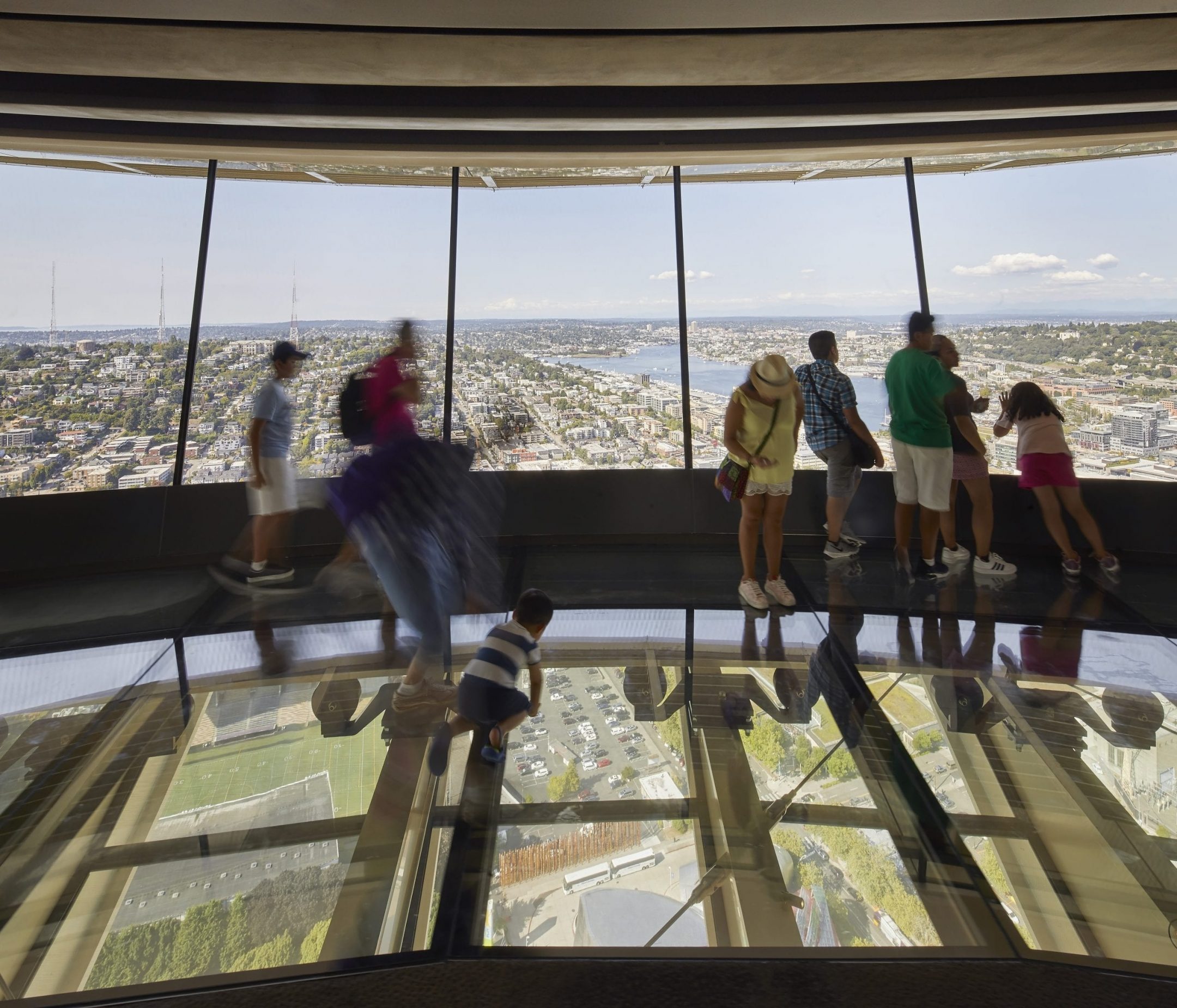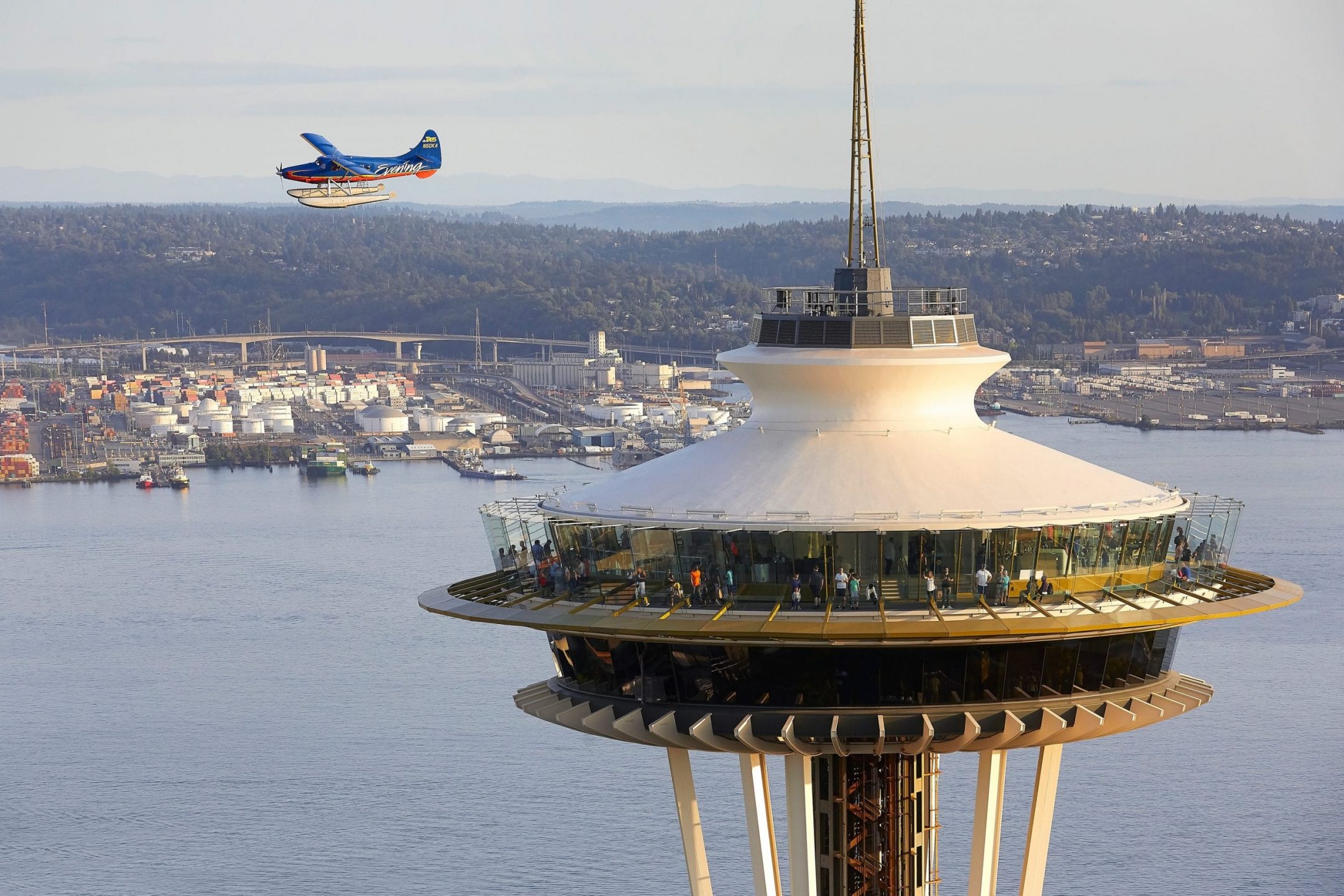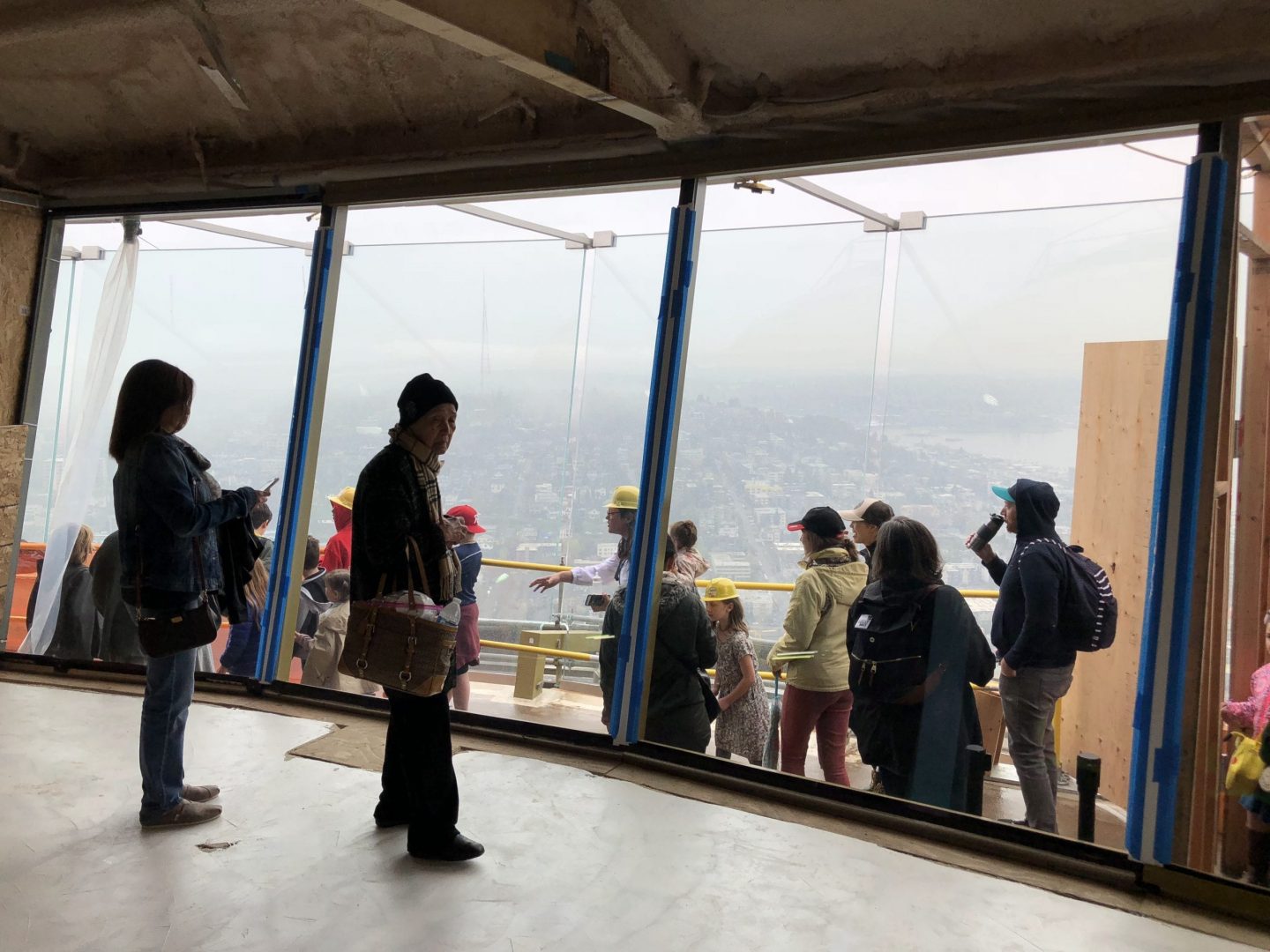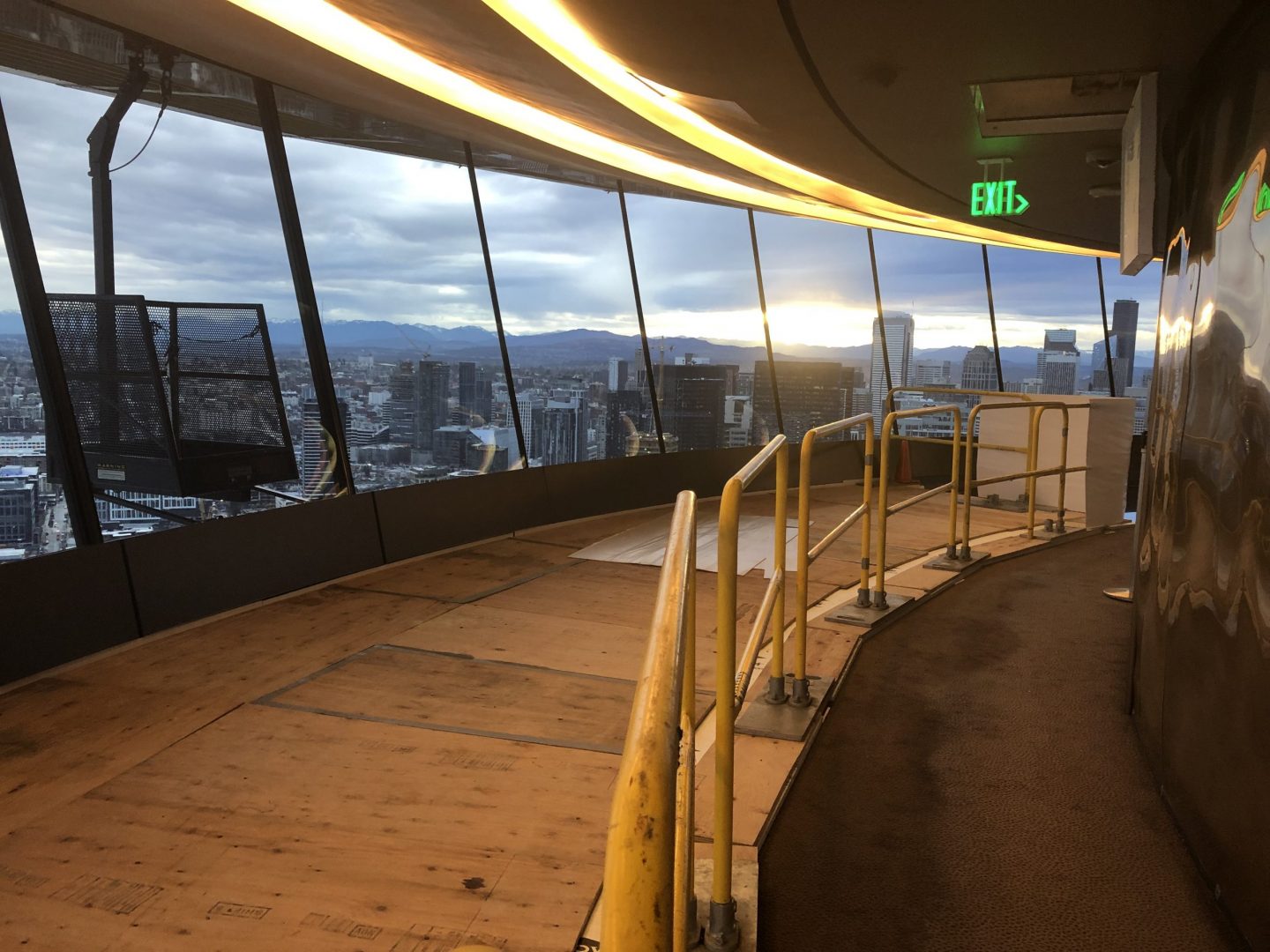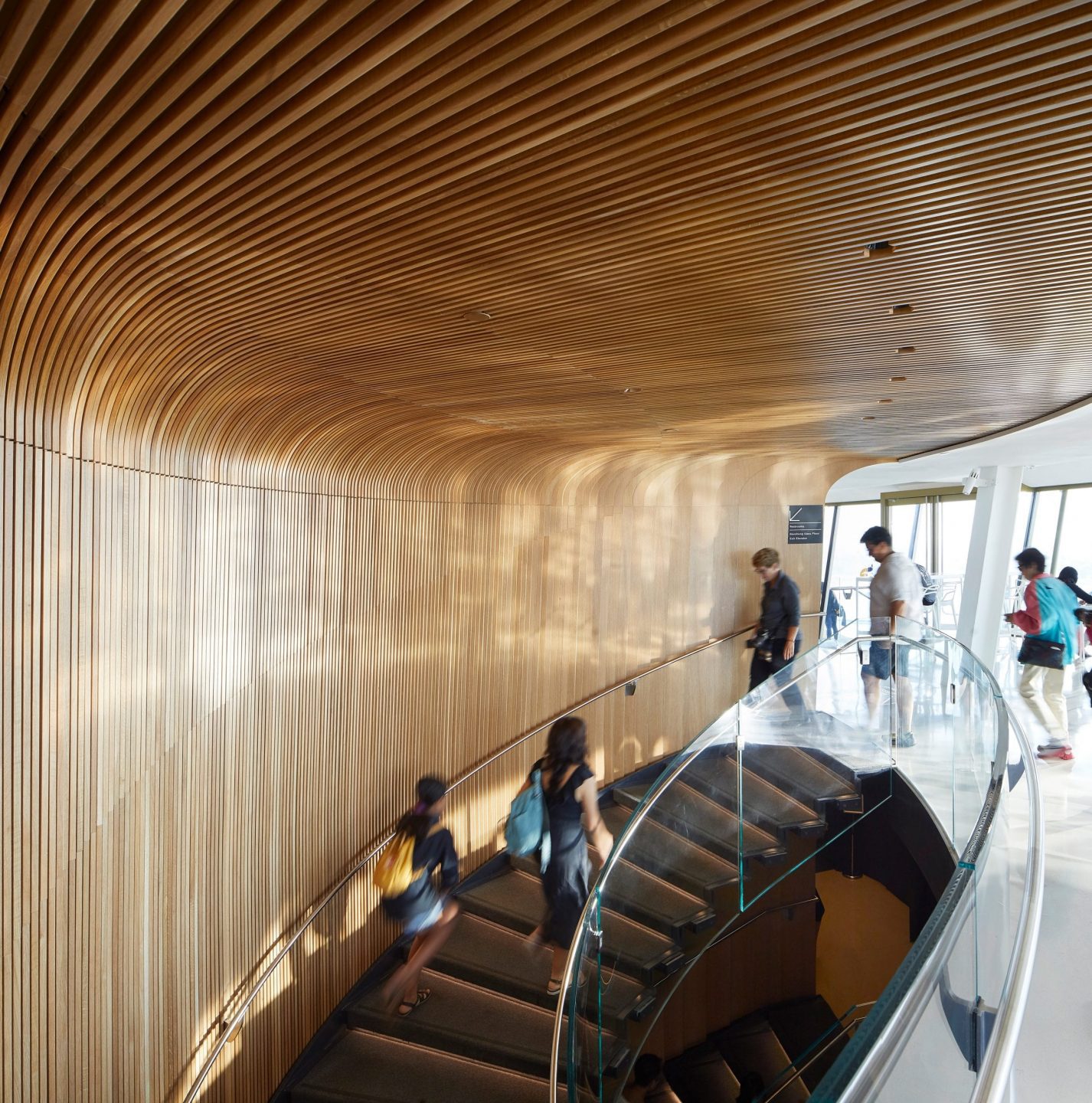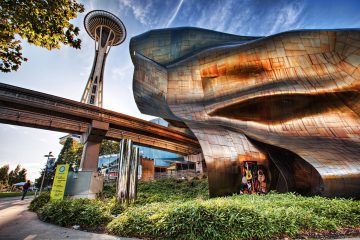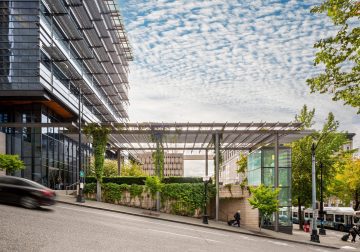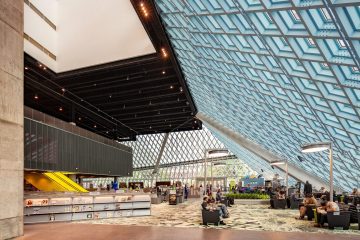Building a Glass Jewel Box Five‑Hundred Feet Above the Ground
The Century Project for the Space Needle
When Hoffman and a team of architects and engineers tackled the first major renovation of Seattle’s landmark structure, the stakes were high. Not only was the Space Needle the most visible project on the Seattle skyline, it also came with a strong emotional element: the community’s passionate attachment to its beloved icon meant that all eyes were on the team’s performance.
When Seattle’s iconic Space Needle was originally constructed for the 1962 World’s Fair, promotional materials promised that visitors would experience “all the wonders of the 21st century.” The Fair’s motto was, “Living in the Space Age.” Living up to its lofty claims, the Space Needle became an international civic symbol and a tourist attraction known around the world.
The ambitious scope was a showcase of cutting-edge glass technology, with installation of over 175 tons of glass including floor-to-ceiling windows on the Observation level, an exterior glass barrier wall with glass seats, a circular stair between the Observation level and the Restaurant level, and the world’s first rotating glass floor, called the Loupe.
Challenge
How do you create a jobsite 500 feet above the ground, while keeping a civic icon open, safe, and accessible for up to 1000 visitors a day?
Solution
With so many unknowns and high-risk elements, the project required over three years of planning before any construction began. Hoffman brought some fresh ideas to the planning stage, drawing on extensive experience in executing major construction in highly congested public areas, as well as best practices developed on our complex industrial and advanced technology projects.
-
2020 Best Project - Renovation/Restoration — Engineering News Record - NW
2020 Award of Merit — AIA NW & Pacific Region
2020 Best of Design: Honorable Mention — The Architects Newspaper
2020 Best Project - Renovation/Restoration — Engineering News Record NW
2020 Project of the Year — Engineering News Record
2019 Seattle 2030 District Vision Awards — Leadership Award
2018 Building of the Year — Seattle Daily Journal of Commerce
Project Story
Fresh Thinking in Preconstruction to Develop an Innovative Scaffold
The initial thinking envisioned the use of a conventional scaffold system. Hoffman’s team identified several downsides to this approach. A key negative was the necessity of an enormous crane, which would have been a blight on the skyline in such a highly visible project, and also added significant costs to the budget.
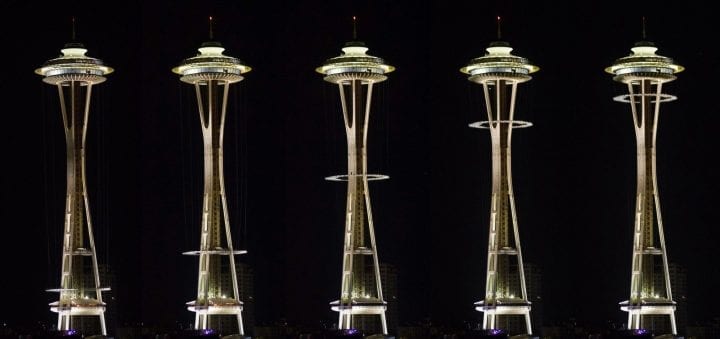
On recent large industrial projects for Boeing and others, Hoffman had developed innovative “engineered platforms” for construction execution, i.e. movable structures that provide safe, efficient access in high-bay work environments. Drawing on this experience, the team worked with specialty consultants to adapt a “quick deck” system that was originally developed for working on oil platforms in the North Sea.
The system starts by hoisting an 8×8-ft ring, then methodically building it outward, adding sections as needed to create more work area. The specialized crews who do the assembly of the system are akin to OSHA-approved rock climbers as they place the attachment points on the ring. The resulting custom-made working platform connected to the Needle’s upper structure, providing a safe and productive enclosed work space and facilitating the hoisting of thousands of pounds of materials.
This approach also resulted in project cost savings of over $7 million, as compared to a traditional scaffold system requiring a large crane.
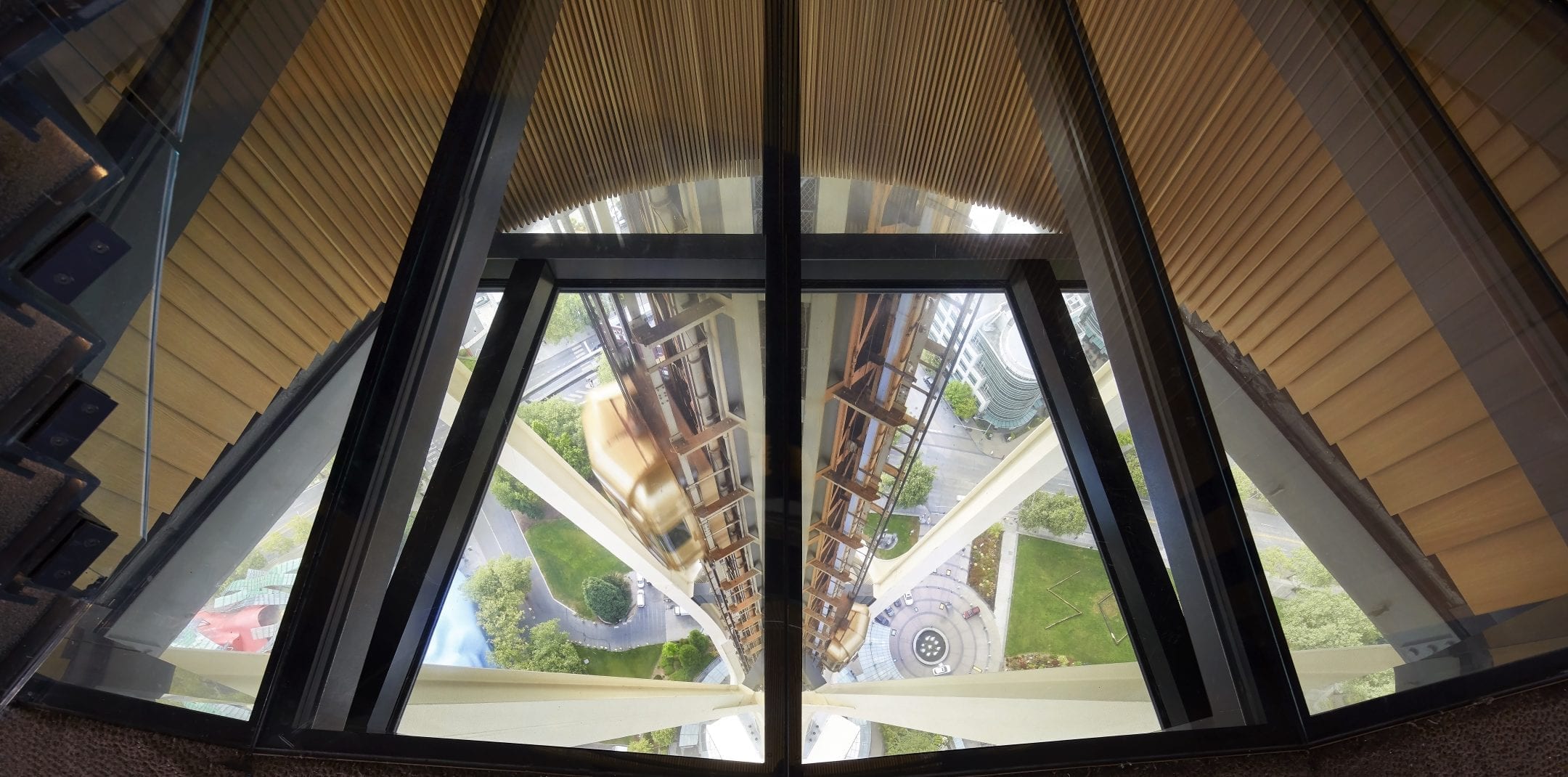
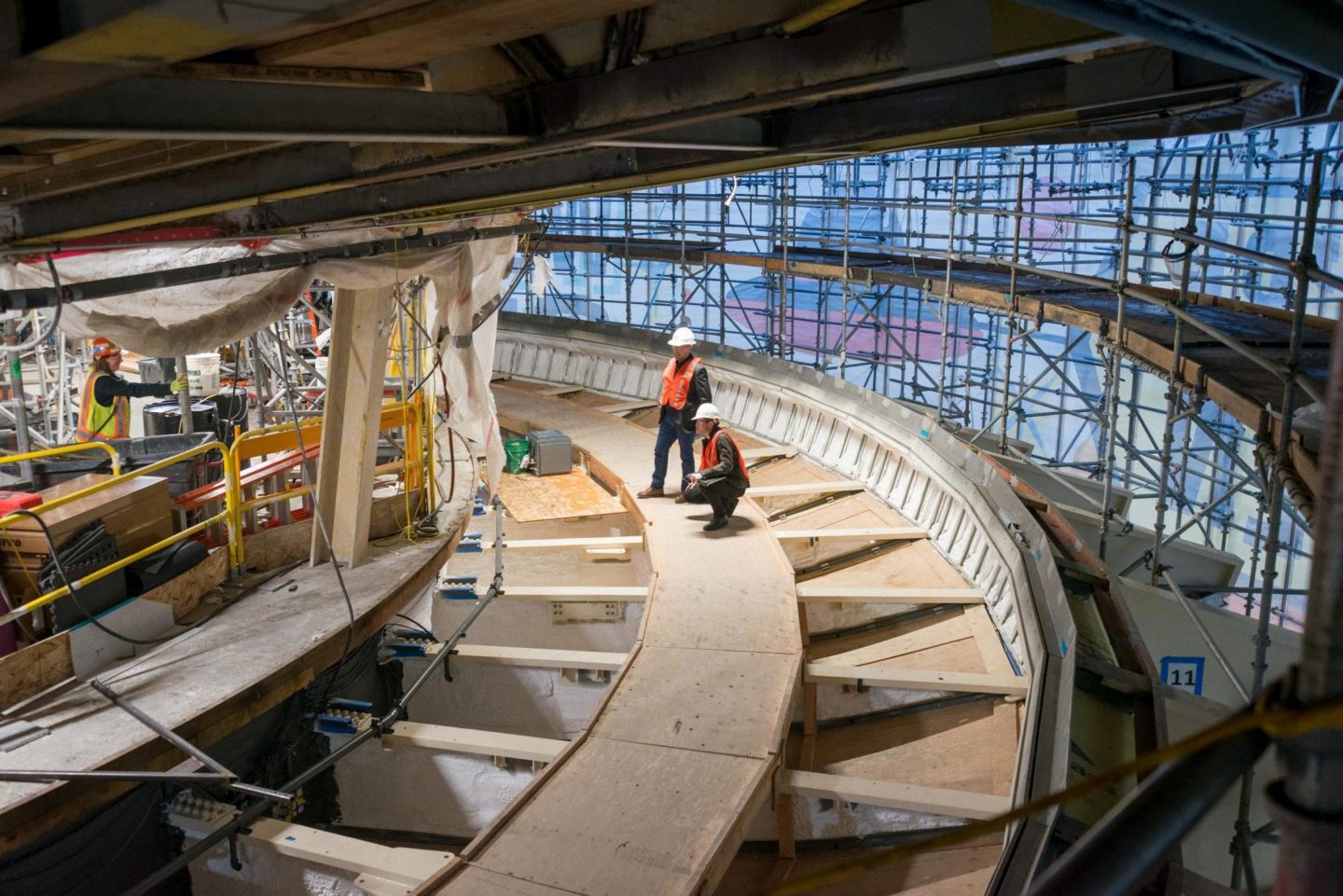
Hoffman Builds: Renovations
Hoffman’s reputation for phenomenal renovations is built on preserving the beauty of the past while ushering in modern touches and advances in technology. We have completed dozens of expansion and remodel projects and consider it an honor to maintain and renovate historic buildings for future generations.
Maintaining the Visitor Experience
With the Space Needle to remain open during construction, a key challenge became how to maintain the visitor experience. The team looked closely at how the building functioned as a venue, and posed the question: how much of the Observation Deck could be closed before visitors felt “cheated” by a diminished experience?
The building’s unique character provided a path to success. Although it is 500-ft high, the Space Needle basically has only two occupied floors. The occupant load wasn’t high, especially as compared to an office tower of similar height. And, as a ticketed attraction, the number of people in the space could be carefully controlled.
This insight provided a path forward for the team, allowing development of a sort of “mini” phasing plan. Crews worked their way around Observation Deck in small sections, always careful to maintain enough space for visitors to enjoy the full Space Needle experience, with unobstructed views in all directions.
Safety, as always, was the top priority. The work was carefully orchestrated to maintain the required exit distances. The most disruptive work was performed at night, with the space returned to an “occupied” state by morning.
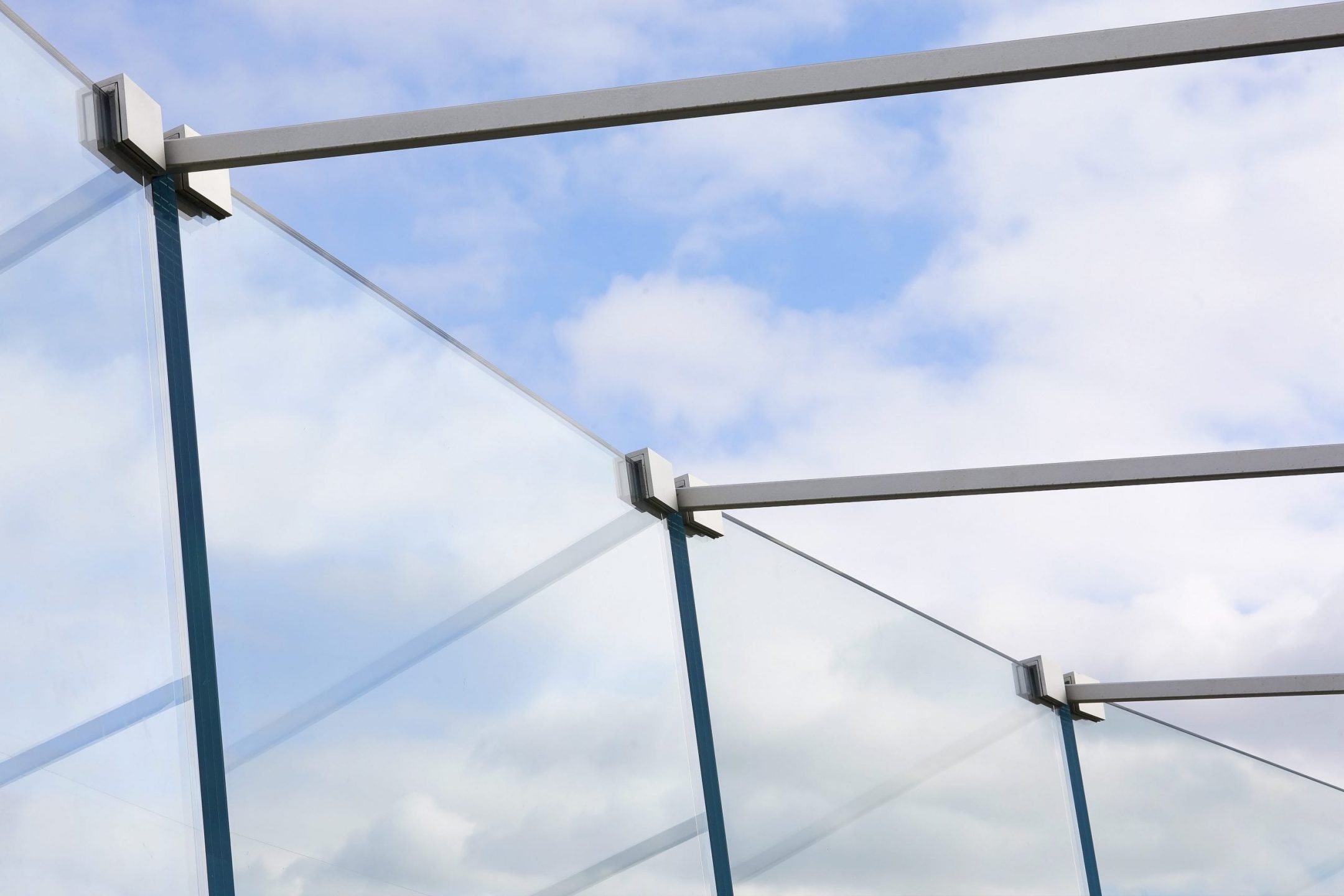
High Wire Act to Raise 176 Tons of Glass
Another Hoffman innovation came in response to the challenge of safely hoisting 2300-lbs. glass panels five hundred feet in the air. A small “jib crane” was used to lift the glass pieces; however, with the extreme weight involved, it took approximately 10 minutes for each panel to reach its destination. That meant the loads were subject to risk of shifting or spinning due to wind and weather impacts.
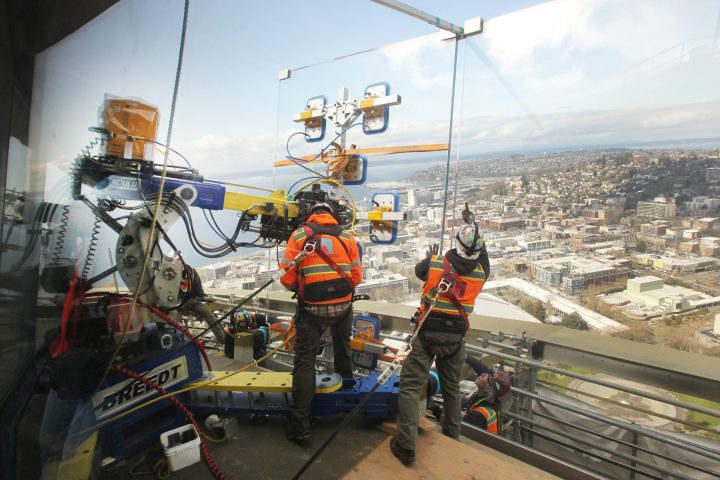
To combat the movement from wind, Hoffman devised a system of motorized fans attached to the glass panels. Similar to drones, the fans’ speed and direction were controlled from the ground and adjusted as needed to keep the panels carefully aligned as they were raised.
A glass-placement robot named Ndulu then takes each panel and carefully maneuvers it into place. The 5,600-pound machine, designed and built for this project by Breedt Production Tooling and Design, moves along a track and is so heavy it had to be assembled on the observation deck.
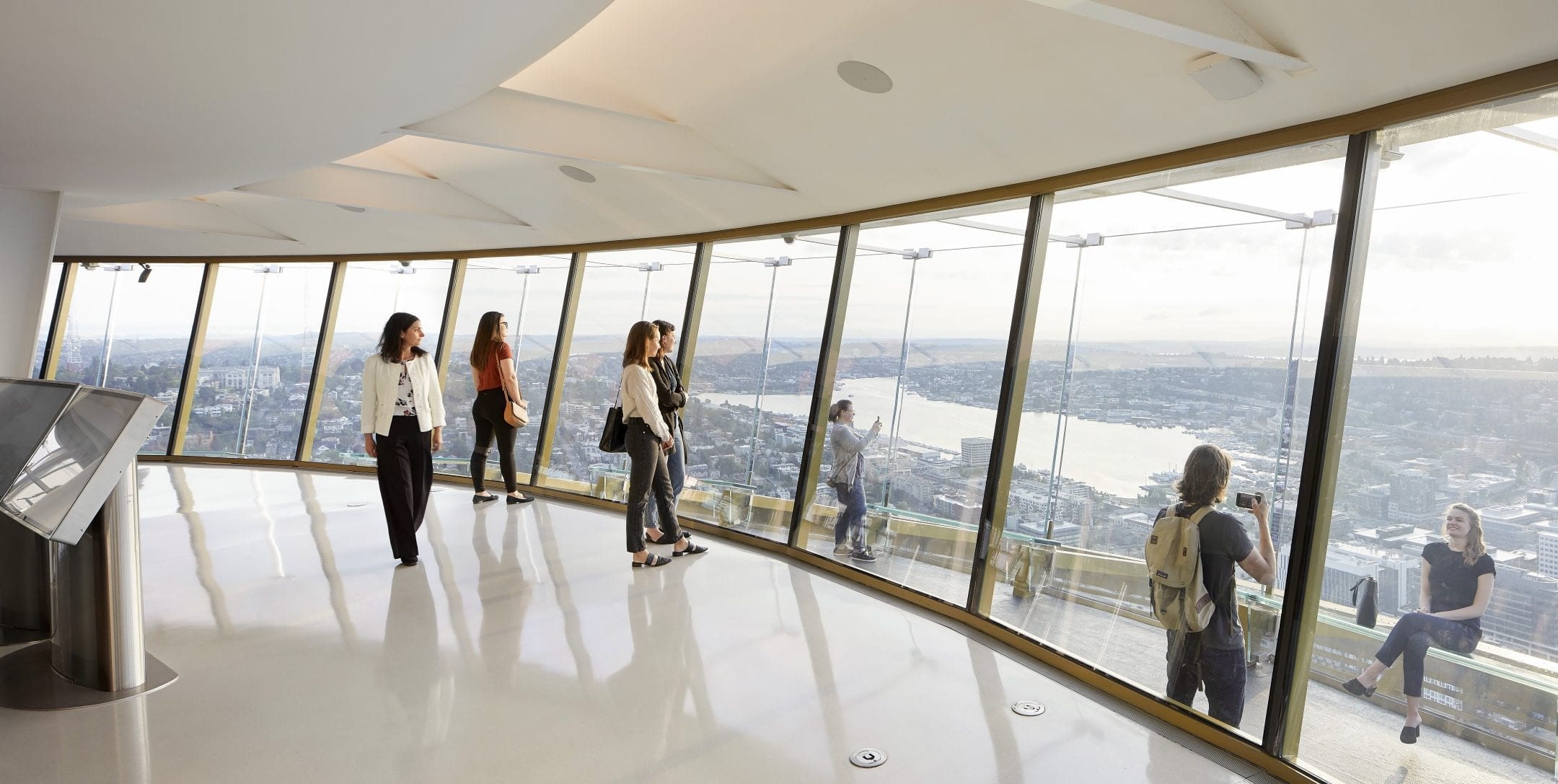
Supporting Puget Sound Economic Development
In addition to supporting long-term job security for employees of the Space Needle and Seattle Center attractions, the project had significant positive economic impact for the greater Seattle area. While some materials were sourced overseas, the majority of suppliers, vendors and partners were Seattle or Pacific Northwest-based. Hoffman engaged more than 50 project partners and subconsultants across an array of disciplines. Many were long-time Puget Sound companies. Local firm Herzog Glass, for example, was responsible for installation of glass throughout the project.
Over approximately 15 months of construction there were 500 workers directly employed on the job site. Hoffman also took steps to lessen the economic impacts on Seattle Center workers who had to be temporarily furloughed due to the Space Needle’s reduced operating capacity during construction. For example, some workers were hired to provide fire watch services.
Perhaps the biggest economic impact of the project came from its successful outcome. The Space Needle currently hosts over 1.3 million guests each year and nearly 60 million visitors have visited the tower since it opened in 1962. By positioning Seattle’s most famous attraction for decades of continued service as a source of jobs and revenue for local businesses and government, the Century Project’s benefits will continue to be felt throughout the entire Puget Sound region for years to come.
